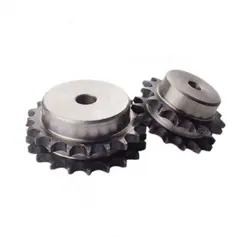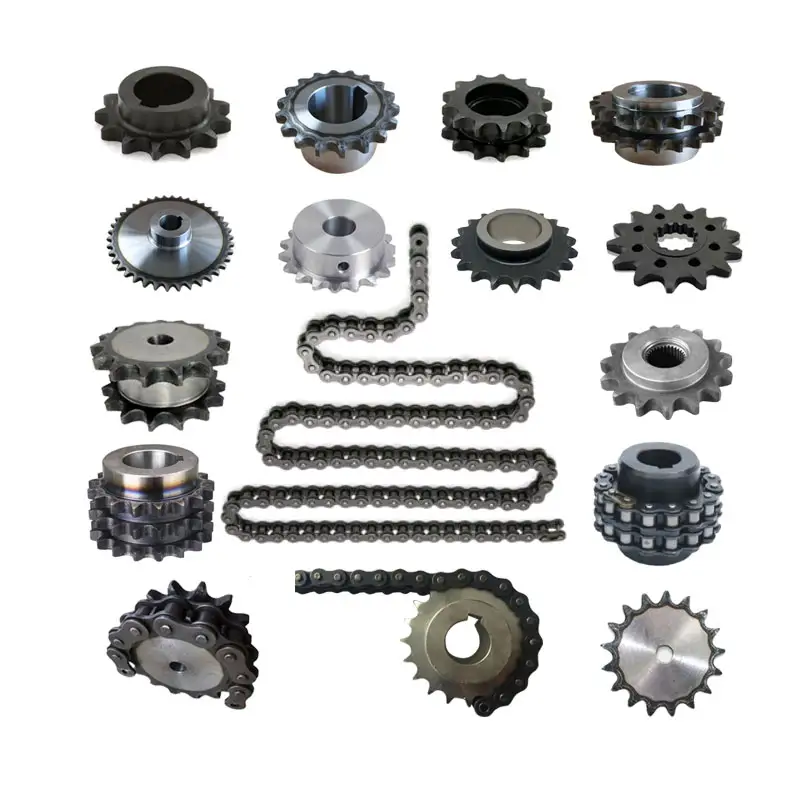Product Description
Product Parameters
| Item | Information |
| Product | Sprocket & Chain |
| Material | 45# steel |
| Catalog | Motorcycle spare parts |
| Application | Used for motorcycle |
| Place of Origin | ZheJiang ,China |
| Size | 428H-42T / 420H-41T sprockets |
| Color | Black / Silver / CZPT chain sprocket |
| Surface finish | ED / CP /UCP |
| Gross weight | 1.9 kg sprocket &chain |
| Net weight | 1.8 kg chain & sprocket |
| Brand | QVY / OEM |
| Customization | Supported |
| Sample | Free |
| Warranty | 1 year |
Product Description
High quality chain kit and sprocket kit
Good spare parts used for motorcycle
45# High quality steel is used in all motorcycle accessories such as chains and sprockets.We provide samples for your inspection free of charge.
Other pattern
Motorcyle Sprocket
There are also many patterns of sprockets. We can also produce as your requirement.Just send me pictures, we provide customization.
Company Profile
ZheJiang Zhenghuang Tire Co.,Ltd. was established in 2002. The company is located in Dasanzhou Industrial Zone in HangZhou Xihu (West Lake) Dis. county, ZheJiang Province.
Zhenghuang Tire has been engaging in rubber products research and development since 2002, carrying out a business mode that research, production and sales concept are integrated together. The main products are Motorcycle and Electric bicycle tires. Over the past 20 years, the company has expanded its scales step by step and become a comprehensive company that specialize in manufacture and sales of tire, motorcycle, bicycle accessories and children toys. Our products, loved and well evaluated by our customers, have been sold to around 40 countries all around the world such as America, Africa and South-East countries.
Striving for excellence is the spirit of our company. We adhere to the object that provides the best products to our customers and always put them first. All our workers of Zhenghuang sincerely invite global partners to cooperate with us and establish a bright future together!
Packaging & Shipping
Certifications
FAQ
Q:How about your delivery time?
A:Usually the delivery time is 15-25days. and 7days is popular time for main main sizes.
Q:How many is your min order?
A:1000pcs
Q:What is your payment terms?
A:1). 30% TT deposit, the balance should be paid against copy of B/L after delivery.
2). By irrevocable L/C at sight.
3). Other payment can be negotiated.
Q:How about the warranty?
A:We have tyre warranty according to the type of product, you can ask our sales for details.
Q: How do you guarantee quality for your tires?
A: We have after service claim agreements and all of us will strictly follow it. Once quality issue occurs, we will refer to this document and make a compensation accordingly.
Q: Can you provide samples for test before we place order?
A: If you need ,we can provide samples at lower cost for testing before order placed.
If there are any more questions, please feel free to contact us! We will do our fast reply !
| After-sales Service: | Available |
|---|---|
| Warranty: | 1 Year |
| Type: | Sprocket |
| Material: | Steel |
| Certification: | ISO9001:2001, CCC, SONCAP, CE |
| Number of Row: | Double Row |
| Samples: |
US$ 0/Piece
1 Piece(Min.Order) | |
|---|
| Customization: |
Available
| Customized Request |
|---|

Best Lubrication Practices for wheel sprocket Systems
Proper lubrication is essential for maintaining the efficiency and longevity of wheel sprocket systems. The lubrication practices can vary depending on the specific application and the environment in which the system operates. Here are some best practices for lubricating wheel sprocket systems:
- Cleanliness: Before applying any lubricant, ensure that the wheel sprocket surfaces are clean and free from dirt, debris, and old lubricant residue. Cleaning the components helps prevent contaminants from mixing with the lubricant and causing additional wear.
- Choose the Right Lubricant: Select a lubricant specifically designed for the wheel sprocket system. Consider factors such as load, speed, temperature, and environmental conditions when choosing the appropriate lubricant. Some systems may require grease, while others may need oil-based lubricants.
- Apply Adequate Amount: Apply the lubricant in the right quantity to ensure proper coverage of the contacting surfaces. Too little lubricant may not provide sufficient protection, while too much can lead to excess heat and waste.
- Regular Lubrication Schedule: Establish a maintenance schedule for lubrication based on the operating conditions of the system. In high-demand applications, more frequent lubrication may be necessary to prevent premature wear.
- Monitor and Reapply: Regularly monitor the condition of the wheel sprocket system and observe any signs of inadequate lubrication, such as increased friction or unusual noise. Reapply lubricant as needed to maintain optimal performance.
- Re-lubrication After Cleaning: If the wheel sprocket system is cleaned, ensure that fresh lubricant is applied after cleaning to restore the protective layer.
- Consider Lubrication Type: Depending on the application, consider using dry lubricants or solid lubricants for environments where dust and dirt accumulation may be a concern.
It’s essential to follow the manufacturer’s recommendations and guidelines for lubrication. Additionally, consult with lubrication experts or equipment suppliers for specific recommendations based on your wheel sprocket system’s unique requirements.

Noise and Vibration in wheel sprocket Configurations
In a wheel sprocket configuration, noise and vibration levels can vary depending on several factors:
- Quality of Components: The quality of the wheel sprocket components can significantly impact noise and vibration. Well-manufactured and precisely engineered components tend to produce less noise and vibration.
- Lubrication: Proper lubrication of the sprocket teeth and chain or belt can reduce friction, which in turn helps minimize noise and vibration.
- Alignment: Correct alignment between the wheel sprocket is crucial. Misalignment can lead to increased noise and vibration as the components may not mesh smoothly.
- Tension: Maintaining the appropriate tension in the chain or belt is essential. Insufficient tension can cause the chain to slap against the sprocket teeth, resulting in noise and vibration.
- Speed and Load: Higher speeds and heavier loads can lead to increased noise and vibration levels in the system.
- Wear and Damage: Worn-out or damaged components can create irregularities in motion, leading to increased noise and vibration.
To reduce noise and vibration in a wheel sprocket setup:
- Use high-quality components from reputable suppliers.
- Ensure proper lubrication with appropriate lubricants.
- Regularly inspect and maintain the system to detect any misalignment, wear, or damage.
- Follow manufacturer guidelines for chain or belt tensioning.
- Consider using vibration-damping materials or mounting methods if necessary.
Minimizing noise and vibration not only improves the comfort and safety of the machinery but also extends the life of the components by reducing wear and fatigue.

Choosing the Right Size of Sprocket to Match a Wheel
Choosing the correct size of sprocket to match a wheel is essential for ensuring efficient power transmission and proper functionality of a mechanical system. Here are the steps to help you choose the right size of sprocket:
1. Determine the Pitch Diameter of the Wheel:
Measure the diameter of the wheel from the center to the point where the teeth of the sprocket will engage with the wheel. This measurement is known as the pitch diameter of the wheel.
2. Identify the Desired Gear Ratio:
Determine the gear ratio you want to achieve for your application. The gear ratio is the ratio of the number of teeth on the sprocket to the number of teeth on the wheel and determines the speed and torque output.
3. Calculate the Number of Teeth on the Sprocket:
Once you have the pitch diameter of the wheel and the desired gear ratio, you can calculate the number of teeth on the sprocket using the formula:
Number of Teeth on Sprocket = (Desired Gear Ratio) * (Number of Teeth on Wheel)
4. Select a Standard Sprocket Size:
Based on the calculated number of teeth on the sprocket, choose a standard sprocket size that comes closest to the calculated value. Sprockets are available in various tooth counts, and you may need to choose the nearest size available.
5. Consider Chain Compatibility:
If you are using a chain drive system, ensure that the selected sprocket is compatible with the chain you plan to use. The chain pitch (distance between the centers of adjacent roller pins) should match the pitch of the sprocket.
6. Verify Center Distance:
Check that the center distance between the wheel and the sprocket is appropriate for your application. The center distance is the distance between the centers of the wheel and the sprocket and should be set to achieve the desired tension and alignment of the chain or belt.
7. Consider the Material and Tooth Profile:
Select a sprocket material suitable for your application, such as steel, stainless steel, or plastic, based on factors like load, environment, and operating conditions. Additionally, consider the tooth profile (standard or custom) to ensure smooth engagement with the chain or belt.
By following these steps and considering the specific requirements of your machinery and mechanical system, you can choose the right size of sprocket to match your wheel and achieve optimal performance and longevity of the system.


editor by CX 2023-11-09